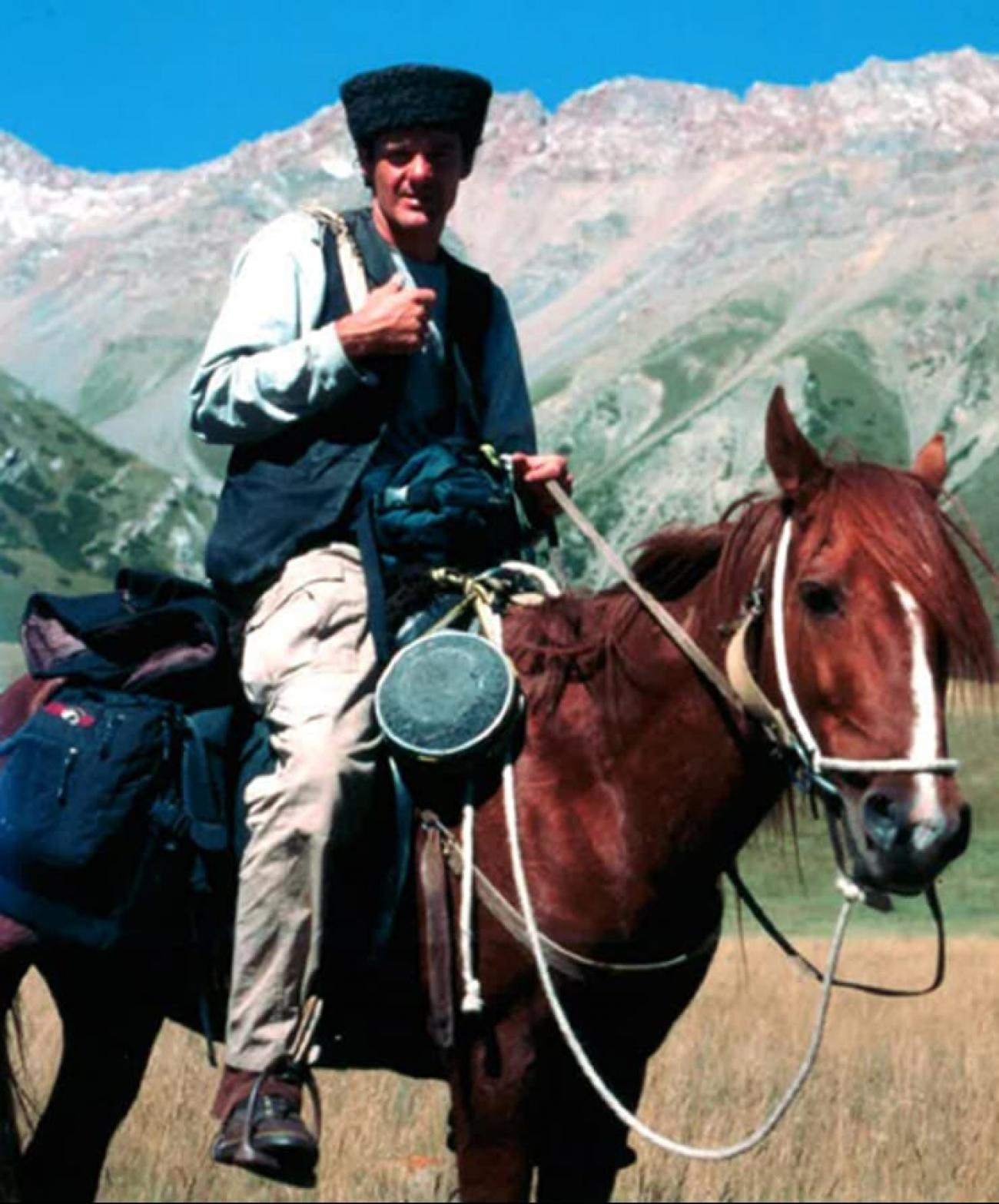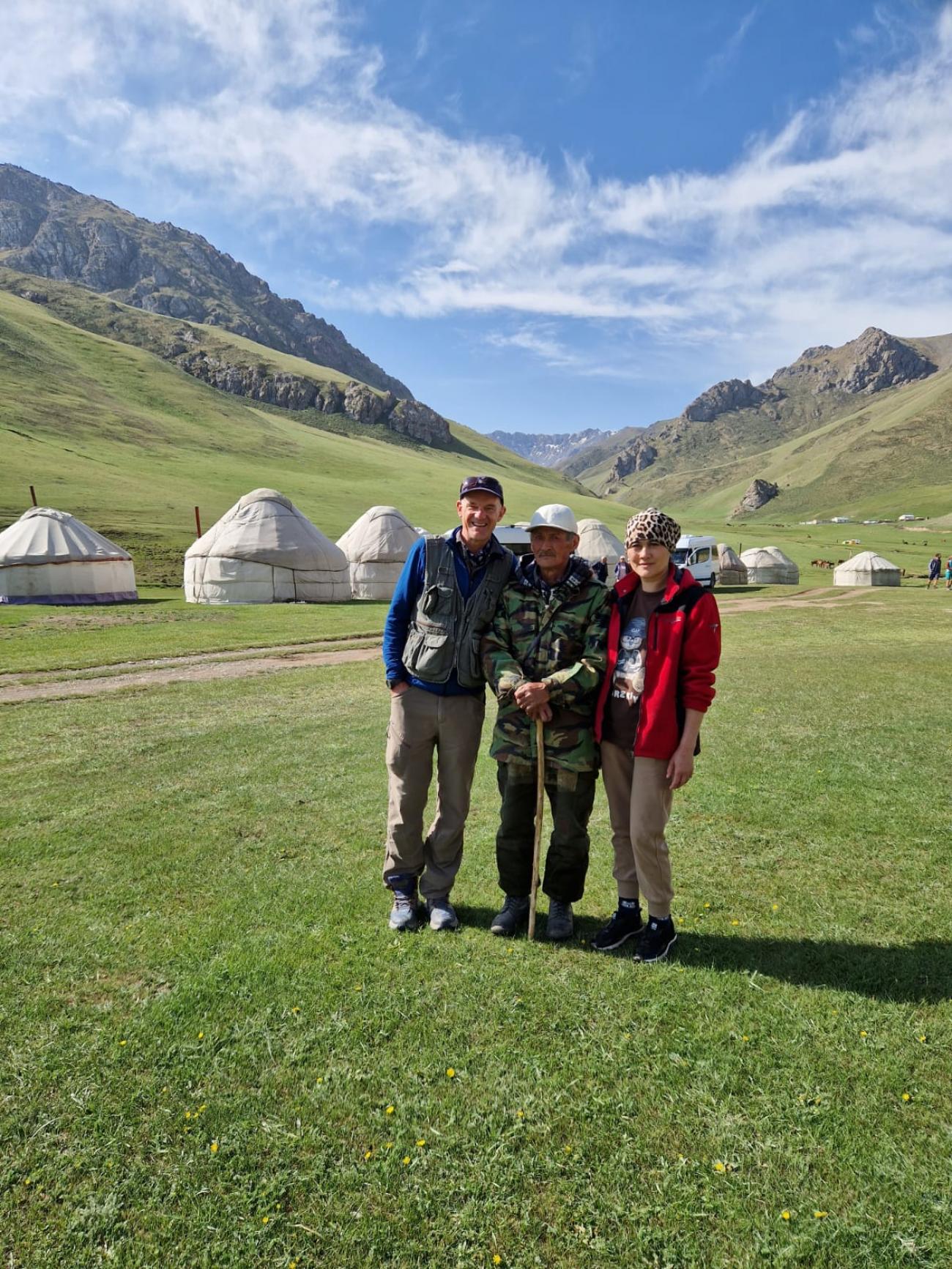Return to Krygyzstan

As 2023 marks our 25th year of operations, the marketing team in London thought it might be a good idea for me to lead an anniversary tour.
As many of you will know, we started by running tours to Pakistan’s spectacular Hindu Kush in 1998 but had to halt operations there in the aftermath of 9/11. What we then chose to do was a tour in 2002 through Central Asia; Kyrgyzstan and Uzbekistan to be exact, loosely following the route of my Silk Road horse ride in 1999. And that is the trip I am now leading.
In WF’s early days I ran quite a few tours along the Silk Road, but our Mountain & Towns itinerary, carefully juxtaposing the nomadic culture of the Kyrgyz with the sedentary life – and all the fabulous ancient cities – of the Uzbeks, has always been popular. But I haven’t been back to this region since 2008 so I was delighted to return.
From the leafy, picturesque capital Bishkek, our group of 12 drove to Son Kul. An extraordinarily beautiful glacial lake, about 30ks long and 18ks wide, situated some 3,000m above sea level, this is the land of the nomads. Each spring, as the snows melt, the locals drive their livestock – yaks, sheep and horses – up to the grazing lands the lake’s surrounds provide, erect their yurts and partake in a way of life that hasn’t changed for centuries.
.jpeg)
Here we stay with Bayish and his wife Noor Gul in their very comfortable yurt camp. When I first brought groups to stay here, 20 years ago, they had only one ‘long-drop’ loo and two yurts, one for cooking and the other for eating and sleeping; after dinner, taken on low tables while sitting on the floor, the tables would be dragged outside, yak fur rugs placed on the ground, and the whole group would line up in a row to sleep in sleeping bags like sardines in a can. Twenty years on, this industrious couple (and their family that work here) now have 25 yurts, all with duvet covered beds, a shower and flush loo complex, and dining yurts with proper table and chairs. When we arrived, Noor Gul gave me a huge hug… she told the group while eating an incredible dinner, that the success of her business had been largely due to Wild Frontiers and the many groups we send them. I told her, Wild Frontiers success was because of people like her, that look after our clients so well in places as remote as this. While there, we walked up to the surrounding hills, discovered ancient petroglyphs, and in the afternoon watch the locals play a game of Kok Boru.
 (1).jpeg)
.jpeg)
From here we drove on to Tash Rabat, a 9th century citadel, situated in another stunning valley teeming with livestock close to the Chinese border. The origins of the building itself are disputed. The name, loosely translating as rock hotel, illustrates that to most it was built as a caravanserai, a refuge for travellers on a northern branch of the Silk Road heading from Kashgar – three days ride away to the south – to the lush Chui Valley and the tribes that lived around Lake Izzy Kul. I myself used it for just such a purpose during by ride from Kashgar to the Caspian Sea in 1999. Although there is little doubt it would have been used for this purpose, others believe it was in fact originally constructed as a monastery by Nestorian Christians. Whatever the truth, it’s a unique building, with a large domed interior, kitchens, dormitories, prayer and meditation cells and an escape tunnel!
.jpeg)
.jpeg)

In 1999, the caretaker of Tash Rabat, Jergul, swapped the mangy nag I had bought at the Kashgar Sunday Market for a fine Kyrgyz steed, that saw me ride safely, and comfortably, all the way over the Mountains of Heaven to Osh. At the time, his daughter Nazira, was only 17 years old. But in a story like that of Noor Gul at Son Kul, over the past 20 years, with our help, she too has built an excellent business, with 16 yurts, a dining yurt, flush loos and a sauna and shower complex. In the morning, here again we went for a walk to find petroglyphs in the hills, and in the afternoon, I took two riders up the valley on horseback.
.jpeg)
.jpeg)
 (1).jpeg)
And finally in Kyrgyzstan, on what was for me another trip down memory lane, we drove across a high pass in the Ferghana Range to Osh, where we stayed with an old friend, Iman Jan. Another person that helped me on my 1999 horse ride, with the new wing of ensuite rooms he had constructed next to his old house, it was clear the tourism industry had served him and his family well.
Tourism often gets derided as a negative industry, accused of inflicting more harm than good. Travelling through this remote, and for many, poor, Central Asian republic, it was great to see that the tourists Wild Frontiers, and others, provide have had such a positive impact.
.jpeg)
